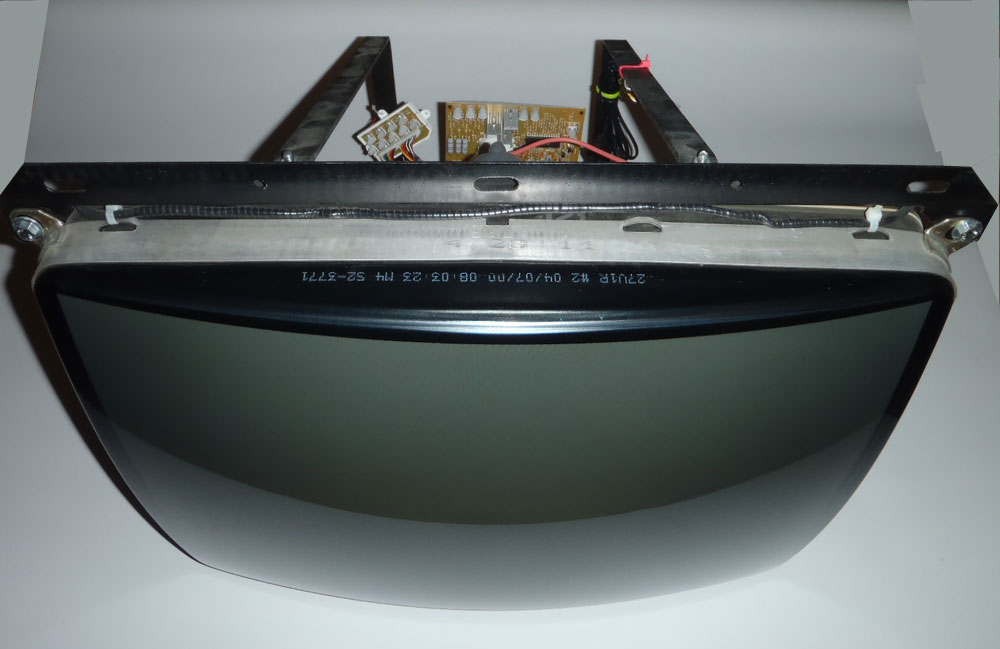I never gave it much thought and used “Smooth (FBX)”, but I guess since I’ m already doing all the color work the direct composite direct should be the way to go. I’m also emulating composite but the change should be negligible if any, after all we are clipping and you can’t clip anything that isn’t there… Maybe Original Hardware is also an option, I don’t know the difference between them so I can’t tell.
NTSC hardware FBX
Composite direct capture FBX
Composite direct capture “feels right” to me, and looks closer to screenshots taken on a Sharp NES TV.
I’m still not 100% clear on the methods used to come up with these palettes, but from the descriptions given it seems like the method used for composite direct capture has the least room for error, so I’d say it’s actually the most accurate. Like the name says, it’s a “pure, unmodified direct-capture of the composite output,” but “is not the most accurate experience,” whatever that means. 
@hunterk: I noticed that “smooth FBX” isn’t an option in Nestopia. Is it under a different name, maybe?
Possibly. It may also be more recent than when we added all of those palettes.
Is there a way to manually add these palette files to Nestopia?
http://www.firebrandx.com/downloads/Novemeber-2017-Palettes.zip
I’m actually more interested on the rawer colors, there’s a RAW palette but I’m not interested on demodulating that.
Yeah, you can load custom palettes at runtime: https://docs.libretro.com/library/nestopia_ue/#custom-color-palettes
@Dogway ultimately, the raw palette + demodulation ends up being the same as using a palette, since no one knows the true values. it’s just constructed with math rather than a color-picker.
Looks like the brightness has been adjusted as well.
Yes, I made some changes to the preset too.
1080p with the HLSL default shader, with humbar effect and distortion and jitter. Thanks again to @hunterk. HLSL still not bloom effect ported from mame.
DISTORTION effect, is used for some games/developer because in some games, most common shooters, is like a rotation effect, in the vertical sides, or like 360 circle rotation. IS part of the image.
pd: update the core of mame to 0.222 today and retroarch block when lauch any game.
Remember that your colors of your monitors/TV or resolution make that this image post above not look good.
So are you saying the bloom isn’t working properly?
I mean that bloom inst in the HLSL shader of retroarch, like msdos mame.
The BGFX version doesn’t include bloom, evidently, so when I switched over to it from the older HLSL-based version, we lost it. It could probably be added back in, though, if someone were inclined to do so.
@linercrt man where have you seen a monitor with such big curvature? I doubt there ever was a TV with so much curvature. That’s really huge
One from me, guest.r shader on my cellphone (slang) tweaked to look a bit like a professional video monitor
… your scanlines is very big and notorious, at least, on my monitor they look very exaggerated and unreal, and in a little screen maybe is ok.
Yes…the old crt screens had big curvatures.
And, i play with these settings that the shader with deffault offer me… i like how look the curvature of the screens that put here, but a less is ok, because ( obiusly word here too ) if you want a correct distortion effect at the sides, you need to put that curvature, is thing of the option that offer the shader…and the same for all the other options too.
If the shader offers the options, you have to do what it offers you.
I tried to combine shaders too as possible, but lots and lots of crack…some shader for d3d, ohter for vulkan, intel…etc
The people that know how to code a shader or how shader works in retroarch, and they are usually around here a lot spending their time with the hobby, they should come together to create a great shader, and all people win.
Anyway, thanks to all for the work.
That curvature is most definitely exaggerated.
I have had at least 10 CRTs with curvature and never had such big curvature, but something like this instead
I believe the curvature is a function of the total depth of the tube from the surface to the electron gun. The electron beam needs to hit the phosphor at ~90 degree angle, so the curvature is used to maintain that perpendicularity across the surface of the screen vs the point-source of the gun.
There were some comparatively very shallow models made toward the end of the CRT heyday, but they suffered from poor convergence and a blurrier image as you approach the corners and the angle of deflection increases.
tl;dr, perhaps LinerCRT is fond of very shallow displays that need that heavy curvature to maintain consistent picture quality.









